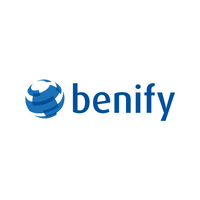Four ways to introduce personalisation into your reward and benefits programme

A Forbes article entitled Why too much data is stressing us out states: “Digital technology has evolved at a far quicker rate than the physical evolution of the brains we use to decipher and put it to use. Our brains aren’t built to cope with the ever-increasing volumes of data we are trying to cram into them”.
In today’s fast-moving, ever-changing digital world, the only way we can decipher all the information is through personalisation and relevancy.
Tailoring rewards
An article from Deloitte, A shift toward tailor-made rewards, discusses how despite the fact leading organisations understand that a personalised rewards system is essential for attracting and retaining talent, many still fall short with outdated rewards programmes.
Organisations that personalise rewards and offer flexibility on an individual level have a clear advantage in the talent market. “Our view is that a system that offers a variety of rewards and a way to personalise them is the only structure with the required flexibility to meet the diverse needs and desires of today’s variegated workforce. Talent today wants a custom rewards experience that reflects how they live, work, and communicate—not a one-size-fits-all approach rooted in the past,” states the article.
Taking things personally
Employers need to provide employees with personalised employee benefits and rewards.
Think about when you’re listening to Spotify or watching a film on Netflix; not only do you have an unparalleled selection to choose from, but after listening or watching just once, you immediately receive recommendations based on your viewing or listening history. It also means that every time you log in, your dashboard is unique and personalised based on your recommendations, history or preferences. In other words, the experience is personalised. Why shouldn’t rewards and benefits programmes offer a similar experience?
Allowing individuals to choose their own employee benefits not only results in greater benefits usage and benefits satisfaction but also demonstrates that you, as an employer, know, understand and care for your employees.
Take, for example, AstraZeneca – one of the world’s largest biopharmaceutical companies and one of the most popular hubs for talent. As a large multinational company operating in a highly competitive industry, AstraZeneca made the decision to invest in an employee portal to help manage and personalise its benefits offering.
Ulf Holmgren, regional benefits lead at AstraZeneca, shares: “Through the portal, they can choose what they’d like. For example, they can buy more vacation, invest it in their pension or withdraw the money in their next salary payment.”
It’s clear that AstraZeneca prioritises employee experience and takes care of their employees. “I think we’ve done well; it feels like our employees know we want the best for them,” Holmgren adds.
How to personalise your rewards and employee benefits programme
Here are four ways you can introduce personalisation into your reward and benefits programme so that it appeals to every employee:
1. Flexible benefits plans
With four generations working side by side, each with their own preferences, trying to meet the needs of every employee is challenging. However, flexible benefits plans allow companies to do just that. Whether it’s the ability to choose a preferred supplier (eg for healthcare or childcare services) or the ability to choose which insurance or pension they want, giving your employees choice and flexibility allows them to personalise and make good use of your offering.
2. Choose your own reward
Deloitte’s article gives the example of how a consulting firm in Europe allows new employees to choose from a range of reward options when they accept an employment offer. The new hire can choose salary or stock options, an extra week of vacation or higher pay.
3. Flexible budgets
Introducing a flexible budget model with a pre-determined amount for each individual allows employees to spend their budget how they want.
For example, mobility provider Athlon offers a flexible benefit that allows employees to distribute their mobility benefit according to their personal needs and preferences.
The benefit provides employees with a yearly commuting budget to cover the cost of transportation. Markus Kullendorf, founder of Benify, shares that this budget model “takes a popular benefit and infuses it with the flexibility that we have come to learn employees really want.
“For example, with an employee living close to work, he or she may opt to cash in his or her mobility allowance or spend just some of it on train or bus tickets; as the employee’s situation changes – moving to a suburb or needing a family-sized car, for example, the benefit can be applied to meet new needs.”
4. Allow employees to select their own Christmas gift
Instead of giving every employee the same gift at Christmas time and hoping for the best, select a pre-determined amount and allow each employee to choose from a range of options – pre-selected by you.
No matter how you decide to introduce personalisation, remember it equals relevancy, and relevancy leads to greater satisfaction and engagement.
This article is provided by Benify.
Supplied by REBA Associate Member, Benify
Benify offers the market's leading global benefits and total reward platform.







